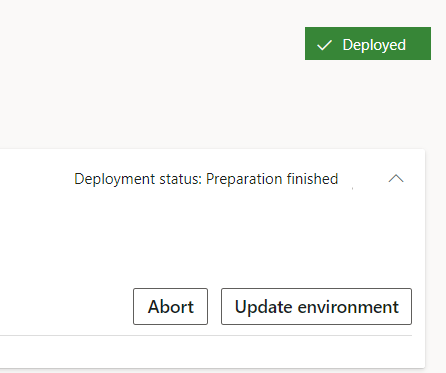Enable RSAT in Finance + Operations (on-premises) environments
The Regression suite automation tool (RSAT) significantly reduces the time and cost of user acceptance testing (UAT) in Finance + Operations (on-premises). For more information, see Regression suite automation tool (RSAT).
Generate and deploy the certificate
Before you begin, make sure that you have at least version 2.15.0 of the infrastructure scripts.
Go to the file share location that contains your Infrastructure folder, and open the ConfigTemplate.xml file.
In the certificates section, find the certificate of the RSAT type, and set the disabled option to false.
Generate the RSAT certificate by running the following command.
.\New-SelfSignedCertificates.ps1 -ConfigurationFilePath .\ConfigTemplate.xmlNote
The RSAT certificate must be self-signed, because Active Directory Certificate Services (AD CS) certificates and certificates from a certification authority (CA) can't be used.
Export the certificate.
.\Export-Certificates.ps1 -ConfigurationFilePath .\ConfigTemplate.xmlExport the scripts.
.\Export-Scripts.ps1 -ConfigurationFilePath .\ConfigTemplate.xmlRerun the prerequisites script to ensure that the certificate is installed. Perform this step as an administrator.
# If remoting, only execute # .\Complete-PreReqs-AllVMs.ps1 -ConfigurationFilePath .\ConfigTemplate.xml -ForcePushLBDScripts .\Complete-PreReqs.ps1
Update the local agent configuration
Before you begin, make sure that you have at least local agent 3.1.0. Otherwise, download the latest version from Microsoft Dynamics Lifecycle Services (LCS).
Remove the local agent if it's already provisioned in the Azure Service Fabric cluster.
.\LocalAgentCLI.exe Cleanup <path of localagent-config.json>Open the localagent-config.json file.
Under deploymentOptions, set rsatEnabled to true. You must also set rsatCertificateThumbprint to the thumbprint of the RSAT certificate that was generated. You can check the thumbprint in the ConfigTemplate.xml file.
Install the local agent.
.\LocalAgentCLI.exe Install <path of localagent-config.json>
Deploy or service your environment
For new environments that haven't been deployed, see Deploy your Finance + Operations environment from LCS for information about how to deploy your environment.
For existing environments, service the environment to apply the changes by deploying a new package or following these steps.
In LCS, select the Full Details link for the environment where you want to apply the RSAT configuration.
Select Maintain, and then select Update Settings. Don't change any settings.
Select Prepare.
After the download and preparation are completed, the Update environment button appears.

Select Update environment to start to update your environment.
After the update operation is completed, the environment will be configured to work with RSAT.